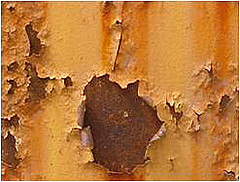
In 1971, Massachusetts became one of the first states to address growing concerns over the effects of lead paint in residential homes. Since the passing of the Lead-Based Paint Poisoning Prevention Act of 1971, federal, state, and local authorities have increased regulatory practices in order to prevent the health hazards associated with long-term exposure to lead paint. Research has shown that lead paint poses an extreme health hazard to individuals. Lead-based paint is one of the major sources of lead poisoning, particularly for children.
According to the Consumer Product Safety Commission (CPSC) “lead poisoning can cause irreversible brain damage and can impair mental functioning.” The Environmental Protection Agency (EPA) also found that exposure to lead can cause hypertension, poor muscle coordination, nerve damage, and irritability in adults, as well as problems with reproduction in both men and women. Children are often exposed to lead paint when they eat paint chips or other objects covered in lead-based paint.
However, the most common ways that consumers are exposed to lead is by ingesting and inhaling lead dust that comes from deteriorating or peeling paint. Sanding and scraping lead paint during remodeling projects also creates lead dust, which can settle on floors, walls, and furniture. This settled dust can then circulate through cleaning or individuals movements throughout the house.
The CPSC recommends that children and adults should be screened for lead poisoning, particularly in communities where houses are old and may have lead paint present. Screening programs are usually offered by local health departments. Because symptoms of lead poisoning can often be mistaken for other illnesses, it’s important to have adequate and early medical testing.
Roughly 40 percent of homes in the U.S. have lead paint. Older homes present the greatest risk for lead exposure. Many homes built before 1978 contain lead paint, and the danger of exposure increases in houses that aren’t in tip-top condition (deterioration, peeling paint, renovation projects, etc.). The U.S. Department of Housing and Urban Development (H.U.D.) offers a number of suggestions for homeowners living in houses built before 1978:
- Wipe down flat surfaces, like window sills, with a damp paper towel and throw it away
- Mop smooth floors weekly using a damp mop to control lead dust
- Take off shoes when entering the house
- Vacuum carpets and upholstery to remove dust (if possible, use a vacuum with a HEPA filter or a “higher efficiency” collection bag)
- Pick up loose paint chips carefully with a paper towel and discard in the trash, then wipe the surface clean with a wet paper towel
- Take precautions to avoid creating lead dust when remodeling, renovating or maintaining your home
- Test for lead hazards by a lead professional (have the soil tested, too)

